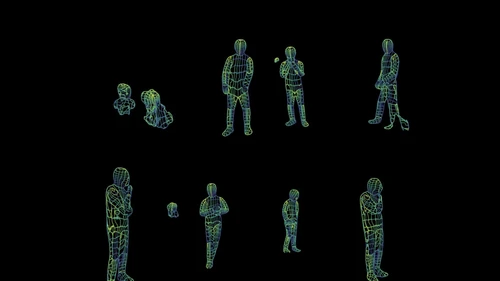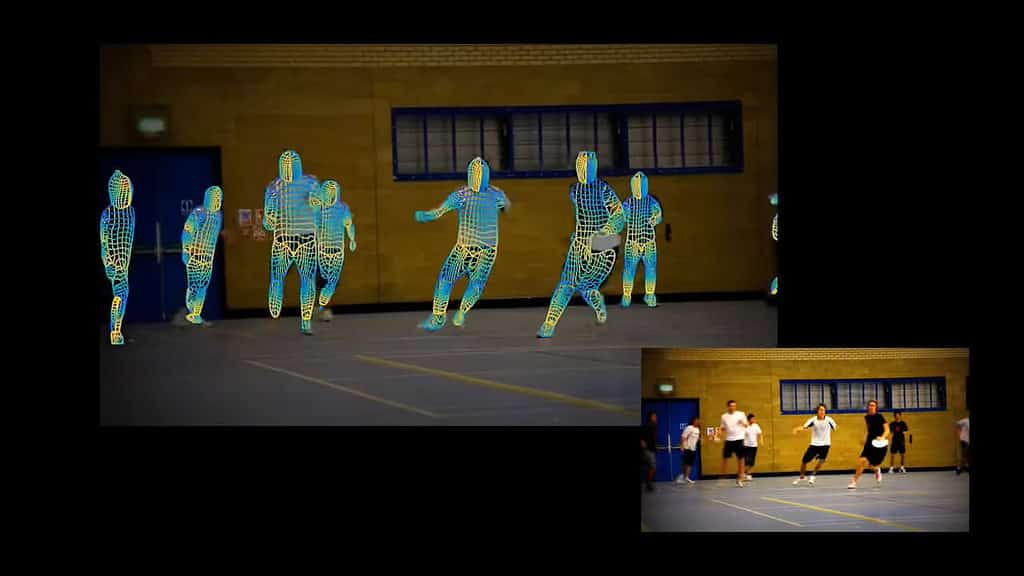
Carnegie Mellon University researchers have turned a common technology found in almost every home into a surveillance technology.
They used radio signals from Wi-Fi routers to detect and track the three-dimensional shape and movement of human bodies in a room. They don’t need to use any cameras or expensive LiDAR hardware.
„We believe that WiFi signals can serve as a ubiquitous alternative to RGB images for human perception in some cases. WiFi-based solutions used for indoor surveillance have little impact on lighting and occlusion. In addition, they protect individuals’ privacy and the necessary equipment can be purchased at a reasonable price. In fact, most homes in developed countries Wi-Fi already exists in the home, and this technology could be scaled to monitor the well-being of the elderly or identify suspicious behaviors at home,” the authors wrote in their study, which is not yet peer-reviewed and available on the preprint server ArXiv.
AI turns Wi-Fi routers into cameras that can see through walls
The team used DensePose, a system to map all the pixels on the surface of the human body in a photograph developed by researchers at Facebook’s AI lab and a London-based team. The ability to identify over two dozen key points and areas on the human body, such as joints and body parts such as arms, head and torso, makes Denspose powerful. This allows AI to describe a person’s pose.
Combining all this data with a deep neural network, we were able to map the phase and amplitude of Wi-Fi signals sent and received to the coordinates of human bodies.
For their demonstration, the researchers used three $30 Wi-Fi routers and three aligned receivers to bounce Wi-Fi signals around the walls of a room. The system cancels out stationary objects and focuses on signals reflected from moving objects, reconstructing a person’s pose in a radar-like image. This has been shown to work even if there is a wall between routers and subjects.
This approach enables standard WiFi routers to see through various opaque barriers, including drywall, wooden fences, and concrete walls.

This isn’t the first time researchers have tried to „see” people through walls. In 2013, a team at MIT found a way to use cell phone signals for this purpose, and in 2018, another MIT team used Wi-Fi to detect people in another room and translate their movements into pasting statistics.
However, a new study by the Carnegie Mellon Group provides greater spatial resolution. You can see what moving people are doing by looking at their poses.
Earlier, another team at Carnegie Mellon Created the camera setup Sound vibrations can be 'seen’ with such precision and detail that the music of a single instrument can be reconstructed in a band or orchestra without the use of any microphones.
The researchers believe that Wi-Fi signals could serve as a „ubiquitous alternative” to conventional RGB cameras, given the ubiquity of such devices, their low cost, and the fact that using Wi-Fi overcomes obstacles such as poor lighting and conventional occlusion. Camera lenses face. They say 'suspicious behaviour’ within a home can be detected and flagged.
However, the question remains as to what constitutes „suspicious conduct” in this context. As companies like Amazon try to put camera drones into our homes, the widespread use of Wi-Fi-enabled human detection raises concerns about the invasion of personal privacy.
This technology may prove to be a double-edged sword, and it will be critical to consider its implications before it hits the mainstream market.
Thanks for your comment!
